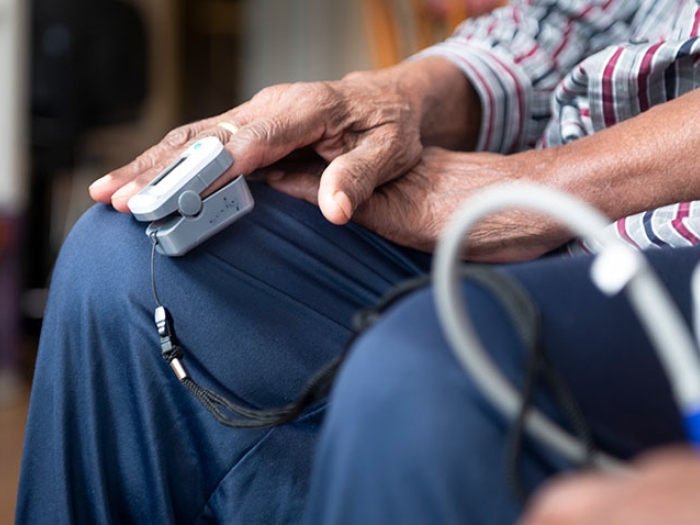New algorithm helps clinicians flag patients who need more care.
2:59 PM
Author |

A patient enters the hospital struggling to breathe— they have COVID-19. Their healthcare team decides to admit them to the hospital. Will they be one of the fortunate ones who steadily improves and are soon discharged? Or will they end up needing mechanical ventilation?
That question may be easier to answer, thanks to a recent study from Michigan Medicine describing an algorithm to predict which patients are likely to quickly deteriorate while hospitalized.
"You can see large variability in how different patients with COVID-19 do, even among close relatives with similar environments and genetic risk," says Nicholas J. Douville, M.D., Ph.D., of the Department of Anesthesiology, one of the study's lead authors. "At the peak of the surge, it was very difficult for clinicians to know how to plan and allocate resources."
Combining data science and their collective experiences caring for COVID-19 patients in the intensive care unit, Douville, Milo Engoren, M.D., and their colleagues explored the potential of predictive machine learning. They looked at a set of patients with COVID-19 hospitalized during the first pandemic surge from March to May 2020 and modeled their clinical course.
The team generated an algorithm with inputs such as a patient's age, whether they had underlying medical conditions and what medications they were on when entering the hospital, as well as variables that changed while hospitalized, including vital signs like blood pressure, heart rate and oxygenation ratio, among others.
Their question: which of these data points helped to best predict which patients would decompensate and require mechanical ventilator or die within 24 hours?
Of the 398 patients in their study, 93 required a ventilator or died within two weeks. The model was able to predict mechanical ventilation most accurately based upon key vital signs, including oxygen saturation ratio (SpO2/FiO2), respiratory rate, heart rate, blood pressure and blood glucose level.
The team assessed the data points of interest at 4, 8, 24 and 48 hour increments, in an attempt to identify the optimal amount of time necessary to predict—and intervene—before a patient deteriorates.
"The closer we were to the event, the higher our ability to predict, which we expected. But we were still able to predict the outcomes with good discrimination at 48 hours, giving providers time to make alterations to the patient's care or to mobilize resources," says Douville.
For instance, the algorithm could quickly identify a patient on a general medical floor who would be a good candidate for transfer to the ICU, before their condition deteriorated to the point where ventilation would be more difficult.
In the long term, Douville and his colleagues hope the algorithm can be integrated into existing clinical decision support tools already used in the ICU. In the short term, the study brings to light patient characteristics that clinicians caring for patients with COVID-19 should keep in the back of their minds. The work also raises new questions about which COVID-19 therapies, such as anti-coagulants or anti-viral drugs, may or may not alter a patient's clinical trajectory.
Says Douville, "While many of our model features are well known to experienced clinicians, the utility of our model is that it performs a more complex calculation than the clinician could perform 'on the back of the envelope' – it also distills the overall risk to an easily interpretable value, which can be used to 'flag' patients in a way so they are not missed."
Paper cited: "Clinically Applicable Approach for Predicting Mechanical Ventilation in Patients with COVID-19," British Journal of Anaesthesia. DOI: 10.1016/j.bja.2020.11.03

Explore a variety of health care news & stories by visiting the Health Lab home page for more articles.

Department of Communication at Michigan Medicine
Want top health & research news weekly? Sign up for Health Lab’s newsletters today!





